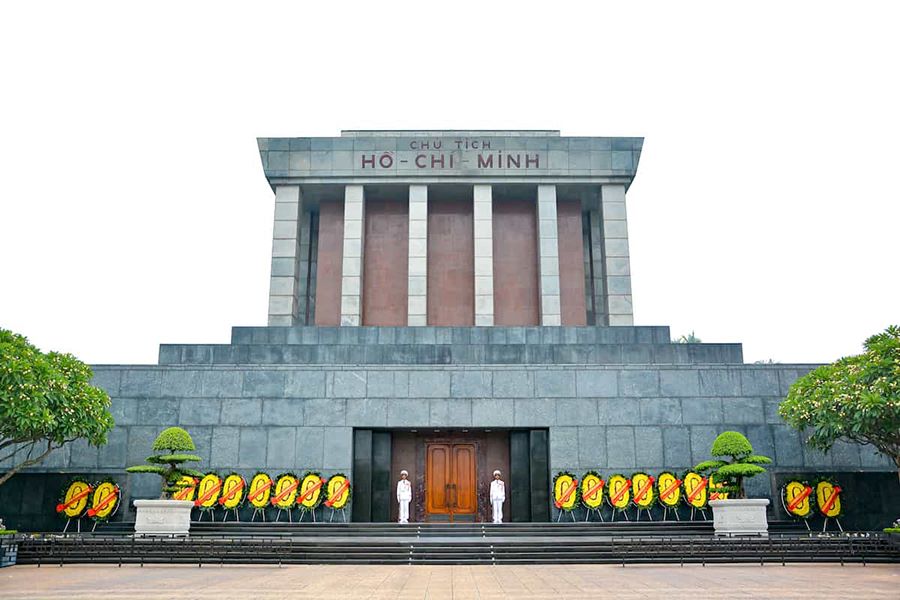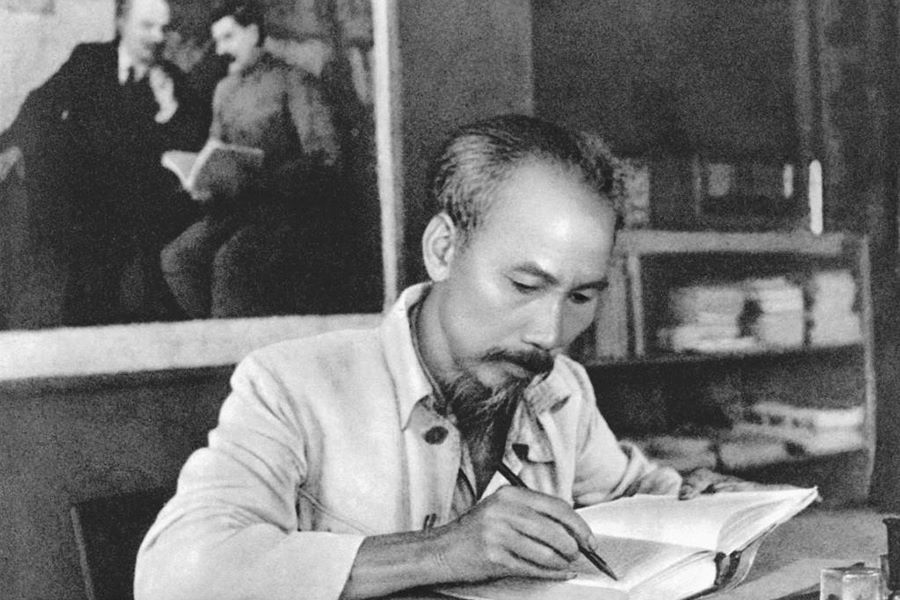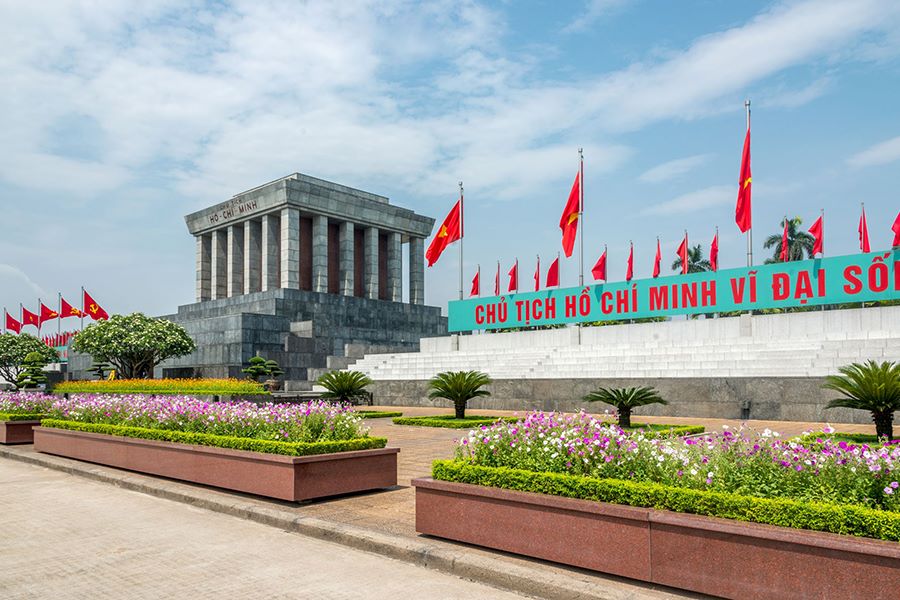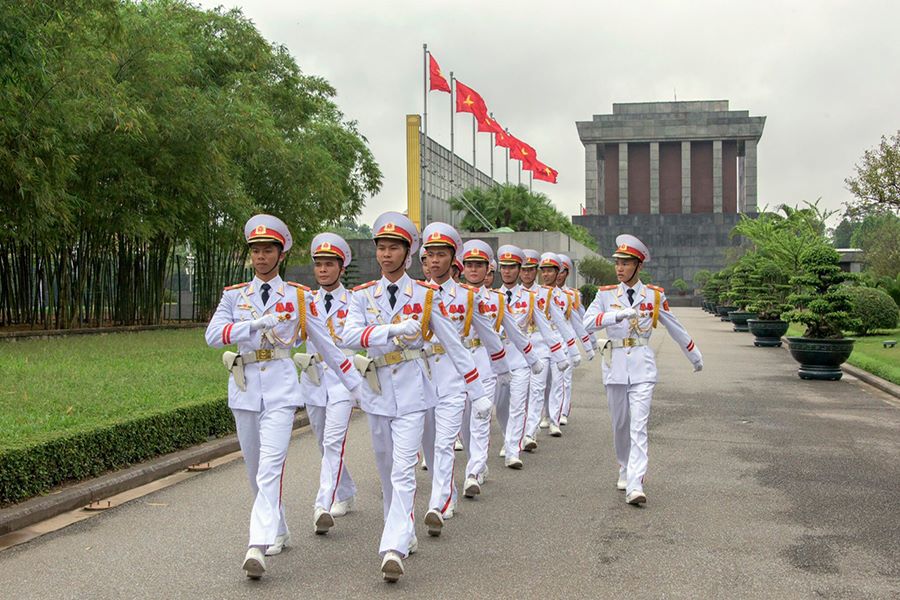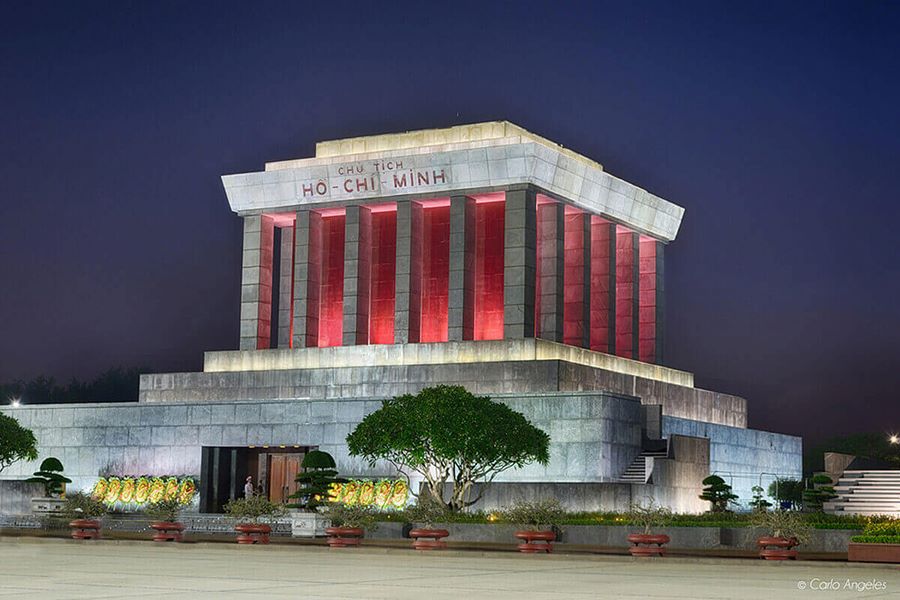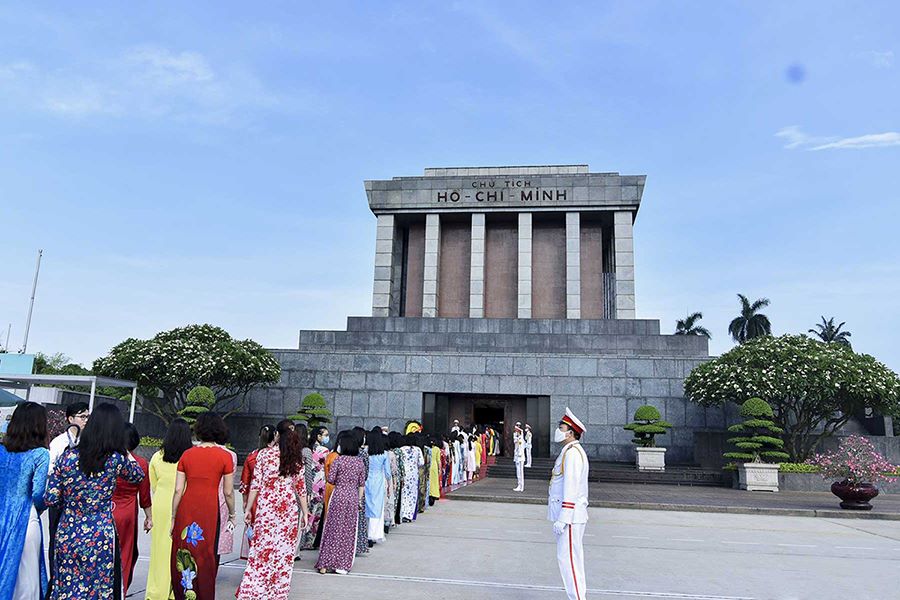Ho Chi Minh Mausoleum is a famous historical site in Hanoi, the capital of Vietnam. This is the place containing the corpse of President Ho Chi Minh. At the Ho Chi Minh Mausoleum, you can gain a deep understanding of life and significance of the great President Ho Chi Minh in Vietnamese history. This article will surely be the best guide for your Indochina tour packages and the Ho Chi Minh Mausoleum.
Who is President Ho Chi Minh City & Why was the Ho Chi Minh Mausoleum Built?
Ho Chi Minh is well-known as the mighty leader who played a vital role in shaping the course of Vietnamese history in the 20th century. With his unwavering determination and indomitable spirit, After guiding the Vietnamese people toward freedom and self-determination, President Ho Chi Minh became a highly regarded figure. In the end, he cleared the path for Vietnam's liberation by leading the revolutionary effort against foreign colonial forces, especially the French and then the Americans. Ho Chi Minh inspired generations with his persistent commitment to social justice and equality, his profound achievements, and his relentless efforts, earning him the stature of a beloved statesman.
Many Vietnamese people view visiting the Ho Chi Minh Mausoleum as an honor, which makes the difficult travel there worthwhile.
Location of Ho Chi Minh Mausoleum & How to Get There?
The Ho Chi Minh Mausoleum is situated in the center of Ba Dinh Square, the former gathering place for President Ho Chi Minh. 2 Hung Vuong, Dien Bien Ward, Ba Dinh District is the precise address. You may take a public bus or your car to get here.
When you drive a car or ride a motorcycle on your own, don't forget to park in the designated locations on Ngoc Ha Street (the entrance to the Ho Chi Minh Museum) and Ong Ich Khiem Street (opposite the Mausoleum Guard Command). If you choose to travel by bus, you can use the 09, 33, 22, 45, and 50 bus lines, which all pass by Ba Dinh Square.
The Construction of Ho Chi Minh Mausoleum & What Inside?
Ho Chi Minh Mausoleum’s Construction
The entire mausoleum is 14 ha wide. It is 21,6 m high, including three layers. The lower layer is steps for the Presidium in the meetings. The middle layer - the central part of the mausoleum consists of the corpse room and stairs up and down. The top layer is the roof made of rubies. Overall, the mausoleum is like a stylized lotus.
In front of the mausoleum, there is a 30-metre flag pole. The bamboo lines on the two sides symbolize the Vietnamese village. Closer, on the two sides of the entrance, there are two frangipani trees, symbolizing the purity, and nobility of President Ho Chi Minh. On the two sides, there are lush fruit gardens, typical for the Vietnamese countryside.
Ho Chi Minh Mausoleum’s Inside
Going up the stairs, we reach the corpse room, where President Ho Chi Minh rests. The corpse was placed in a glass box. The way of design from three sides allows people to admire him longer. Through the clear glass, President Ho Chi Minh looks like sleeping in a simple suit.
The History & Significance of Ho Chi Minh Mausoleum
In his will, President Ho Chi Minh specified that his remains should be cremated and scattered across the three regions of the nation; however, the government chose to preserve his body and house it in the Mausoleum, where people could come pay respects and pay their respects.
The governments of Vietnam and the Soviet Union convened in January 1970 to talk over the layout and building methods for the mausoleum. Then, with strong backing from Soviet specialists, the Politburo of the Central Committee of the Party authorized the work of creating the mausoleum.
In his will, President Ho Chi Minh specified that his remains should be cremated and scattered across the three regions of the nation; however, the government chose to preserve his body and house it in the Mausoleum, where people could come pay respects and pay their respects.
The governments of Vietnam and the Soviet Union convened in January 1970 to talk over the layout and building methods for the mausoleum. Then, with strong backing from Soviet specialists, the Politburo of the General Committee of the Party authorized the work of creating the mausoleum.
The Embalmed Body of President Ho Chi Minh
Following President Ho Chi Minh's death on September 3, 1969, steps were taken to safeguard his legacy for future generations. In a cooperative effort between the Soviet Union and Vietnam, a committed Vietnamese medical team worked with a group of Soviet experts who were well-known for their accomplishments in embalming Lenin's corpse. The embalmed body of Ho Chi Minh was interred in a glass casket at the Ho Chi Minh Mausoleum in Hanoi, which welcomes thousands of tourists each year.
However the departure of all Soviet experts upon the dissolution of the Soviet Union in 1991 presented a problem for President Ho Chi Minh's bodily preservation. As a result, Vietnam's government started talks with Russia to transfer the manufacturing of the essential preservation chemicals to its country. The recipe for the preservation cocktail was first withheld by Russian scientists, but it was eventually made public in 2004, the year Vietnam formally adopted the method.
The embalmed body of President Ho Chi Minh serves as a reminder of the Vietnamese people's reverence and regard for their beloved leader by preserving
Ho Chi Minh Mausoleum Highlights
The Ho Chi Minh Tomb's overall architectural design is a solid square block made up of three layers that are 21.6 meters high and 41.2 meters wide. The mausoleum's construction is designed to be extremely durable; it can withstand earthquakes of magnitude 7, floods, and explosives.
The exterior of the mausoleum is covered in gray granite, and marble columns surround it. At the summit of the tomb, the words "CHỦ TỊCH HỒ-CHÍ-MINH" are prominently written in crimson jade stone. The 200 sets of doors in the tomb are made from rare woods collected from throughout the country.
The words "Không có gì quý hơn Độc lập Tự do" (Nothing is more precious than Independence and Freedom) and President Ho Chi Minh's gold-plated signature are set against a background of red and pink marble in the lobby. Two soldiers are constantly on duty in front of the mausoleum; their duties alternate every hour.
The Ho Chi Minh Mausoleum has a room covered with marble. Here, the body of President Ho Chi Minh is positioned on a bed elevated on a stone pedestal inside a glass
Another distinctive aspect of the mausoleum is its surroundings. The lush garden that surrounds the mausoleum is home to over 250 different species of plants. There is deep symbolic meaning associated with each tree and bloom in this area, many of which are related to stories from the life of Ho Chi Minh.
Ho Chi Minh Mausoleum Opening Hours, Entrance Fee & Dresscode
Ho Chi Minh Mausoleum's Opening Hours
Every Tuesday, Wednesday, Thursday, Saturday, and Sunday, the Ho Chi Minh Tomb is open in the morning. The mausoleum is closed to visitors in the afternoon on certain days, as well as on Mondays and Fridays. Even if May 19, September 2, or the first day of the Lunar New Year falls on a Monday or Friday, the tomb will still be open to tourists.
Every year, from September to November, the tomb is closed for approximately two months to maintain the body of Ho Chi Minh. The Mausoleum Management Board will make the precise schedule public well in advance.
The Ho Chi Minh Mausoleum's precise hours of operation are as follows:
- June through October 31: Tuesday through Thursday and Saturday through Sunday, 7:30 a.m. to 10:30 a.m.
- November 1 through March 31 is Winter & Spring. Tuesday through Thursday and Saturday through Sunday, 8:00 a.m. to 11:00 a.m.
- Saturdays, Sundays, and public holidays have thirty-minute extensions to their visiting hours.
Go to Ba Dinh Square to witness the daily flag-raising and lowering ceremonies at six in the morning and nine at night, if you can fit it into your schedule. These rituals will undoubtedly deepen the significance of your journey and increase your admiration for this nation.
Ho Chi Minh Mausoleum's entrance fee
The cost of a ticket to access the tomb is currently VND25,000 (US$1) per person. This is a fair and commendable amount to spend for a historical trip of Vietnam.
Ho Chi Minh Mausoleum's Rules & Dresscode
The following rules apply to visitors to the Ho Chi Minh Mausoleum, both when they are there to honor the monument and when navigating the surrounding area:
- Put on formal, well-groomed clothing.
- Check your possessions at the security check gate.
- Do not jostle or disturb the line; instead, follow the officers' directions and walk in line.
- Remove your cap and place it in your right hand.
- Avoid making loud noises and avoid touching the walls.
- Avoid putting your hands in your pockets.
- If you wish to record or take pictures in the area, abide by the directions of the security personnel on duty.
- The room where President Ho Chi Minh's embalmed body is placed in the mausoleum should not be filmed, photographed, or drawn in

